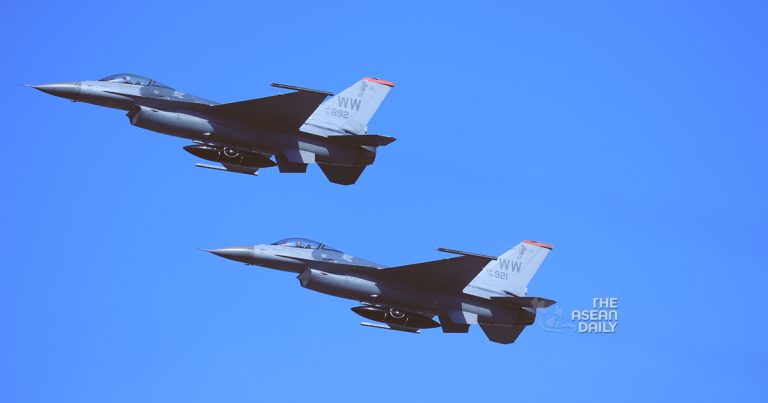27-12-2023 (MANILA) The Philippines has been grappling with the challenge of financing its planned acquisition of 12 F-16 fighter jets since the potential sale was approved by the United States in 2021, with Manila considering various solutions to address the financial burden.
Jose Manuel Romualdez, the Philippine ambassador to the U.S., expressed the need to find a long-term financing solution for the costly purchase, stating, “It’s still too expensive, so we have to find a way to be able to finance it in the long term. We want to change our [economic] growth.”
The estimated cost of the aircraft and related equipment, as announced by the U.S. in June 2021, stood at $2.43 billion, which amounts to over half of the Philippines’ annual defense budget. The primary objective of acquiring these fighter jets is to counter China’s air and maritime activities in the South China Sea.
Romualdez mentioned the possibility of canceling the tentative deal with the U.S. for new F-16s and exploring the option of purchasing secondhand aircraft from a third country like Denmark. He noted that Denmark had a dozen or more hardly used F-16s available, but Manila would need to amend its laws to allow the use of the national budget for secondhand equipment.
However, it appears unlikely that the Danish fighter jets will be heading to the Philippines. In October, the U.S. State Department authorized the transfer of Denmark’s F-16 aircraft to Argentina, thereby depleting Denmark’s inventory of F-16 fighters. This decision was driven by the need for the U.S. to respond promptly to China’s growing influence in its vicinity, following reports of Beijing proposing alternative fighter airplanes to Argentina.
Another option under consideration for Manila is seeking financial aid from the U.S. Romualdez expressed hope that the U.S. would provide assistance to expedite the modernization of the Philippine armed forces, emphasizing the critical nature of the current times.
As the Philippine Air Force gears up to select new fighter aircraft in the near future, Sweden has offered its Saab JAS 39 Gripen multi-role aircraft, which is believed to be a top contender alongside the American F-16. The Philippines has been implementing a 15-year modernization program since 2012 to upgrade its defense equipment, with recent acquisitions of Japanese-made radars signaling progress towards this goal.
Patrick Cronin, chair for Asia-Pacific security at the Hudson Institute, stressed the need for the U.S. to reallocate its security assistance fund, Foreign Military Financing (FMF), towards the Indo-Pacific region to counter China’s long-term competition. He urged the Biden administration to respond swiftly to solidify ties with the Philippines, highlighting the historical lack of FMF allocation to the Asia-Pacific.
While the U.S. recently added Taiwan to the list of FMF recipients, a significant portion of the fund is still dedicated to the Middle East. However, a pending emergency budget bill for security assistance, which includes provisions for the Indo-Pacific, could potentially change the trajectory of FMF allocation. This would be a significant development for the Philippines, enabling a stronger response to coercion in its maritime domain and demonstrating Washington’s resolve.
As Congress returns to session in early January, the fate of the bill remains uncertain due to partisan politics leading up to the U.S. presidential election in November. While there is broad support in Congress to address the growing threat posed by China, the bill’s approval has been delayed, leaving Manila in anticipation of potential financial aid from the U.S.
The State Department and Pentagon have refrained from commenting on the matter of future financial assistance to Manila, adding to the prevailing uncertainty surrounding the issue.




